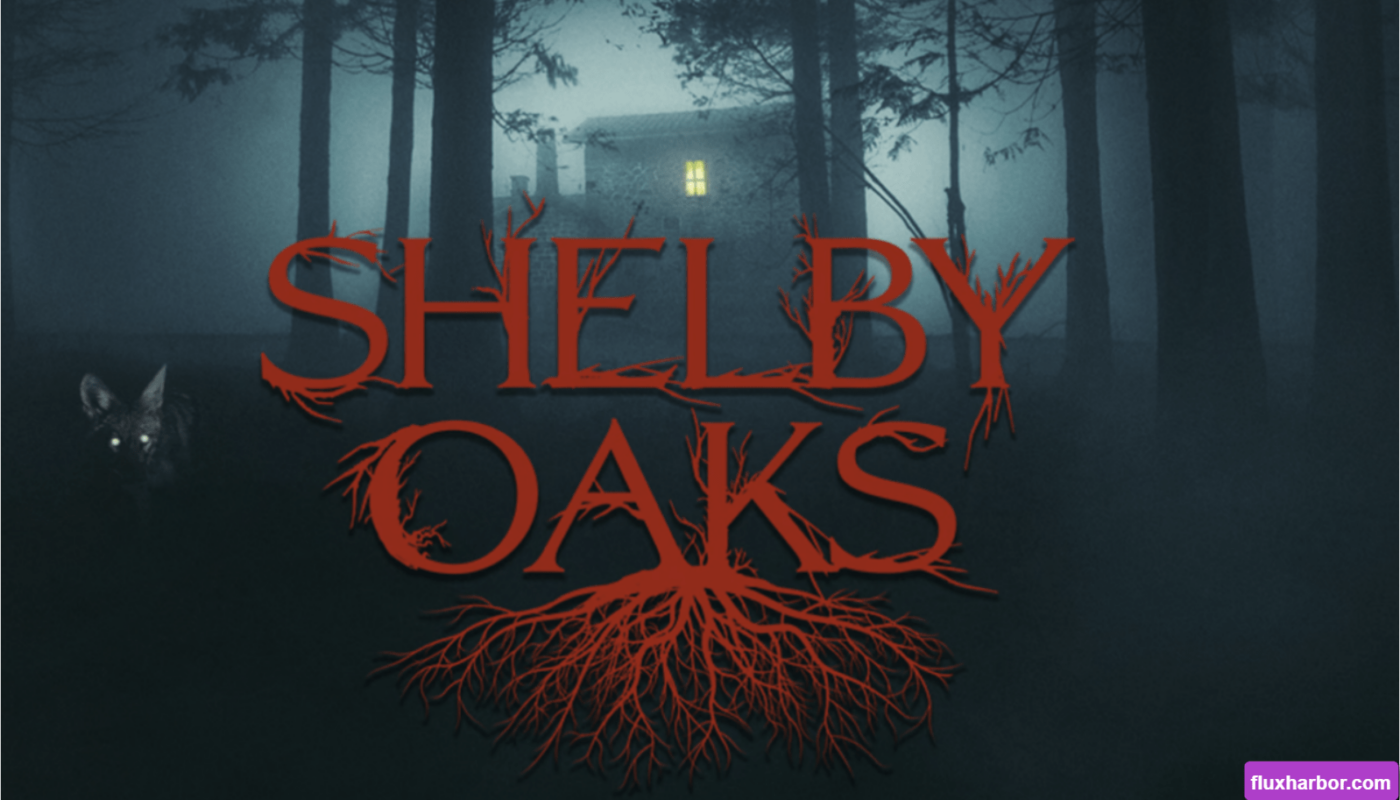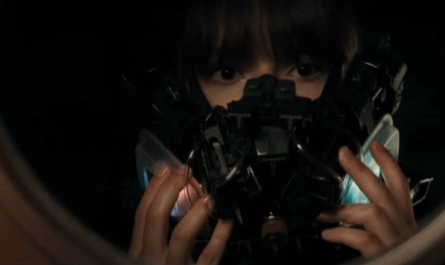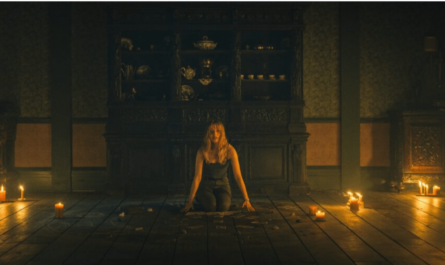Shelby Oaks Review: When subjects aim to criticize critics, they often throw around the familiar adage: “Those who can, do. Those who can’t, criticize.” Chris Stuckmann’s atmospheric horror debut, Shelby Oaks, exemplifies this sentiment as the well-known YouTube film critic steps into the role of filmmaker. With genre master Mike Flanagan serving as an executive producer, the project remains firmly rooted in Stuckmann’s unique vision and tone. The film ambitiously merges various subgenres, blending investigative procedurals with found-footage elements, creating a cohesive narrative rather than falling apart. Despite some occasional confusion in its hybrid approach, Shelby Oaks delivers an engaging found footage experience reminiscent of The Blair Witch Project, Horror in the High Desert, and Lake Mungo.
Shelby Oaks (2024)
- Genre: Horror, Mystery, Thriller
- Synopsis: The film follows a paranormal investigator who uncovers chilling secrets while searching for her missing sister in a small town with a dark history, exploring the thin line between reality and the supernatural.
- Release Date: July 20, 2024
- Director: Chris Stuckmann
- Cast: Camille Sullivan, Brendan Sexton III, Michael Beach, Robin Bartlett, Keith David, Charlie Talbert, Emily Bennett, Sarah Durn
- Runtime: 102 minutes
- Writers: Chris Stuckmann, Sam Liz
- Studio: Paper Street Pictures
What Is Shelby Oaks About?
In Shelby Oaks, Stuckmann sticks with familiar territory, focusing on a missing team of ghost-hunting vloggers called “The Paranormal Paranoids.” The film starts as a documentary-style recount of the team’s last known activities, centering on the disappearance of the show’s host, Riley (Sarah Durn). Riley’s sister, Mia (Camille Sullivan), takes center stage as a talking head, struggling to accept her sister’s death despite skepticism from local law enforcement like Detective Burke (Michael Beach). Frustrated by the repeated, grim statistics, Mia decides to take matters into her own hands. Stuckmann shifts the narrative focus to Mia’s search for Riley, leaving behind the crime-doc concept before it loses its edge.
In truth, Shelby Oaks delivers what the Horror in the High Desert series lacks. While Dutch Marich has built a following for his low-budget trilogy, it tends to dwell too long on interviews before diving into the found footage elements. Stuckmann’s film, on the other hand, quickly moves from law enforcement and family reactions to Mia’s solitary quest to find her sister. The horror elements are pervasive throughout, avoiding excessive dialogue and keeping the tension high.
Cinematographer Andrew Scott Baird collaborates with Stuckmann to enhance traditional visuals. As Mia investigates ominous clues through Shelby Oaks’ abandoned woods and eerie landmarks like derelict prisons, Baird skillfully captures the enveloping darkness without overwhelming the screen. The cinematography vividly conveys a sense of dread and melancholy, surpassing the typical “horror movie trees” seen in average genre films. Despite limited set locations, Baird’s framing intensifies the feeling of malevolence, highlighting Stuckmann’s deep understanding of horror aesthetics, likely influenced by Flanagan’s guidance.
‘Shelby Oaks’ Takes an Unexpected Turn in Its Final Act
There’s a pivotal moment in Shelby Oaks that took me by surprise, and I appreciate how the film evolves, though the third act may be polarizing. While the conclusion isn’t a complete letdown, it does feel somewhat predictable and blunt. The film’s closing minutes, influenced by films like Zodiac and Barbarian, reveal Stuckmann’s broad knowledge of horror, though it sometimes clashes with his original storytelling. Without giving away too much, the ending displays some weaknesses.
Camille Sullivan shines as Mia, who dives into evidence and risks her safety in her quest to find her missing sister. Veteran actors like Michael Beach and Keith David provide solid support, but Sullivan is the standout. Her portrayal of Mia’s determination and grief is compelling, capturing the emotional depth of her character. Sullivan’s performance echoes the intensity of Flanagan’s Absentia, a film driven by sorrow and despair.
Overall, Shelby Oaks is a promising directorial debut for Stuckmann. While it may not be revolutionary, it showcases his ability to translate his online critique experience into a gripping sisterly horror story. The film is chilling, well-acted, and supported by a rich, folkloric narrative. Shelby Oaks stands out as a unique horror procedural that strives to break from convention, succeeding as a significantly unsettling genre experiment with both scares and emotional depth.



